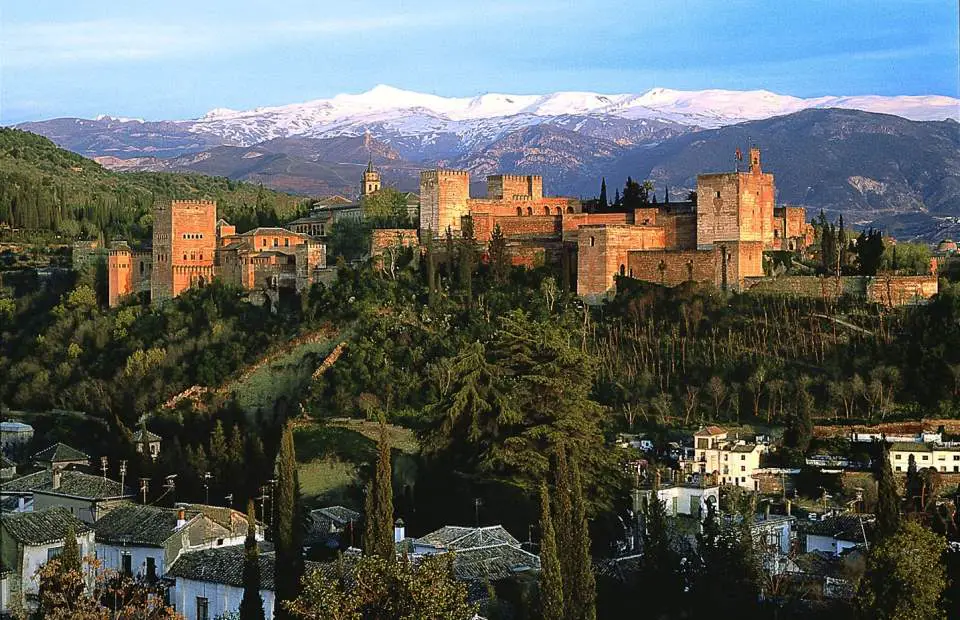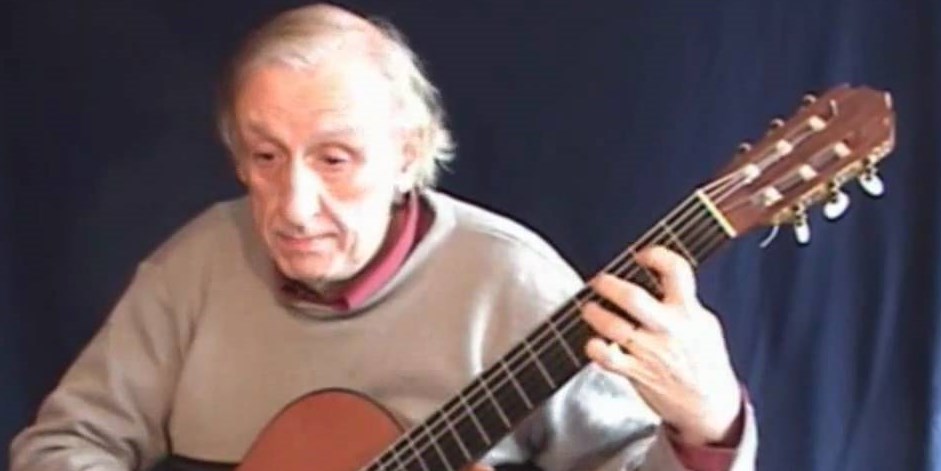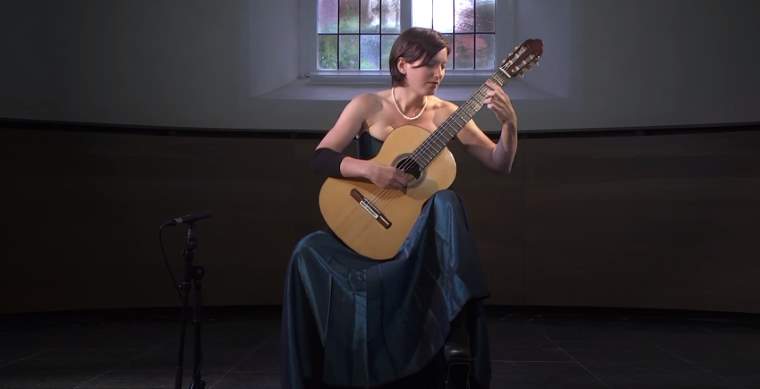Three versions (Tavi Jinariu, John Williams, and Andrés Segovia) of Francisco Tárrega‘s Recuerdos de la Alhambra (English: Memories of the Alhambra).
Recuerdos de la Alhambra is a classical guitar piece composed in 1896 in Granada by Spanish composer and guitarist Francisco Tárrega. It was written for and dedicated to Tárrega’s patron Concepción Gómez de Jacoby, commemorating their visit to the Alhambra palace and fortress complex in Granada, Spain.
The piece uses the classical guitar tremolo technique; wherein a single melody note is plucked consecutively by the ring, middle, and index fingers in such rapid succession that the result is an illusion of one long sustained tone; often performed by advanced players. The thumb plays a counter-melody on the bass between melodic attacks.
Recuerdos de la Alhambra: Tavi Jinariu version
Classical guitarist Tavi Jinariu performs Recuerdos de la Alhambra on a Cordoba Torres model from the Master series. This guitar is handmade in Oxnard, CA, and resembles the smaller body and shorter scale of Torres’ original 1888 design (25.2 in / 640 mm scale length), while taking other design elements from his 1860 and 1864 models for the neck, headstock, bridge, and decorative elements.
A few modern refinements such as a truss rod, geared tuning machines, durable finish, and non-gut strings were added to improve on what was not available in the 1800s but are essential today. The result is an instrument that exemplifies authentic Torres designs, voicing, and feel, and captures a rare piece of guitar-making history.
Recuerdos de la Alhambra: John Williams version
“A lot of things can make a musician a great musician: phrasing, for example, in John Williams’ performing is amazingly beautiful, hear the way he plays melody and accompaniment, giving each part his place in this masterpiece. He is one of the best classical guitarists ever if you want to make critics, you must be very careful.” – A comment on YouTube.
Recuerdos de la Alhambra: Andrés Segovia version
“This particular interpretation of the Tárrega piece is the loveliest of the many performed by the very best guitarists of our time. It is soft as music through the trees rising and falling as the air beneath a small bird’s wings. Many of the other performances have a metallic tremolo whereas Segovia’s is soft, almost muted.”
“The pacing is unhurried, leisurely to the point of intimacy; the base steady as a shallow stream rolling over small pebbles of different sizes and shapes. Wonderful. The guitar sounds very much like the Hauser that he had for many years though I cannot be certain, the Hauser is slightly less tender for this music than a guitar crafted by a Spanish luthier, especially an older one. Selecting suitable strings and carefully polishing the nail edges is critical.” — A comment on YouTube.
Alhambra

The Alhambra (which means “The Red One” in English) is a palace and fortress complex located in Granada, Andalusia, Spain. It was originally constructed as a small fortress in AD 889 on the remains of Roman fortifications, and then largely ignored until its ruins were renovated and rebuilt in the mid-13th century by the Nasrid emir Mohammed ben Al-Ahmar of the Emirate of Granada, who built its current palace and walls. It was converted into a royal palace in 1333 by Yusuf I, Sultan of Granada.
After the conclusion of the Christian Reconquista in 1492, the site became the Royal Court of Ferdinand and Isabella (where Christopher Columbus received royal endorsement for his expedition), and the palaces were partially altered in the Renaissance style. In 1526 Charles I & V commissioned a new Renaissance palace better befitting the Holy Roman Emperor in the revolutionary Mannerist style influenced by humanist philosophy in direct juxtaposition with the Nasrid Andalusian architecture, but it was ultimately never completed due to Morisco rebellions in Granada.
Francisco Tárrega’s “Recuerdos de la Alhambra” was written for and dedicated to Tárrega’s patron Concepción Gómez de Jacoby, commemorating their visit to the Alhambra palace
Sources
- Recuerdos de la Alhambra on Wikipedia
- Andrés Segovia on Wikipedia



Narciso Yepes has a really nice interpretation of Recuerdos de la Alhambra!!
(But this must be contrasted with some of his other interpretations, which are rather sterile, strict and linear. His interpretation of Sor Etudes come to mind – those are not recommended at all, unless you like a 20th century modernist approach to those works).